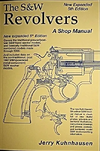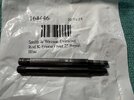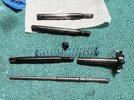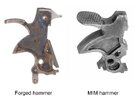Hi everyone,
I'm looking at purchasing an older S&W 66-2, but I have one concern. I know these guns are extremely durable (unless shot frequently with hot 357 loads), but since S&W switched their manufacturing to MIM parts, what do I do if something were to break, which could most definitely happen to an older gun? I obviously don't intend to abuse the thing, but I don't own a firearm that doesn't get shot at least somewhat regularly and this would be no exception.
Is anyone still making parts for these? Which MIM parts interchange with the old ones? Any and all information is greatly appreciated!
I'm looking at purchasing an older S&W 66-2, but I have one concern. I know these guns are extremely durable (unless shot frequently with hot 357 loads), but since S&W switched their manufacturing to MIM parts, what do I do if something were to break, which could most definitely happen to an older gun? I obviously don't intend to abuse the thing, but I don't own a firearm that doesn't get shot at least somewhat regularly and this would be no exception.
Is anyone still making parts for these? Which MIM parts interchange with the old ones? Any and all information is greatly appreciated!






